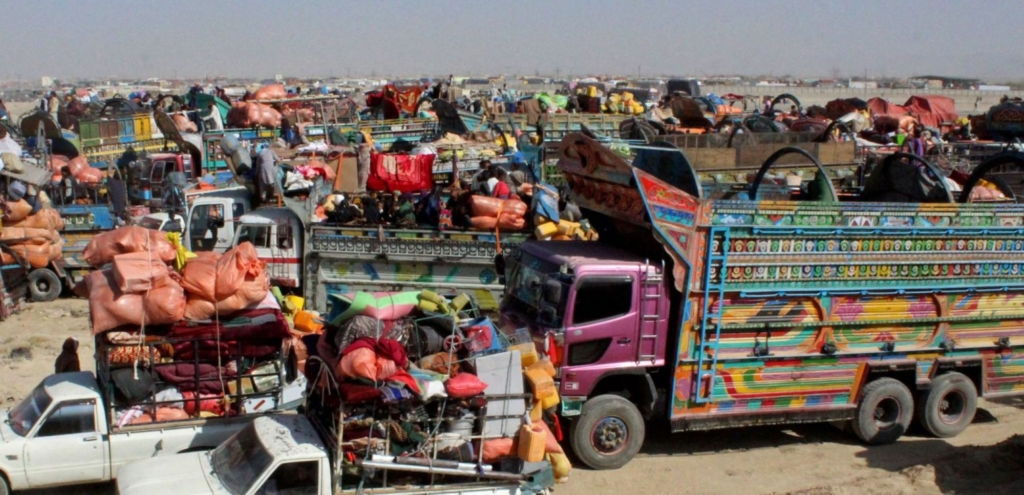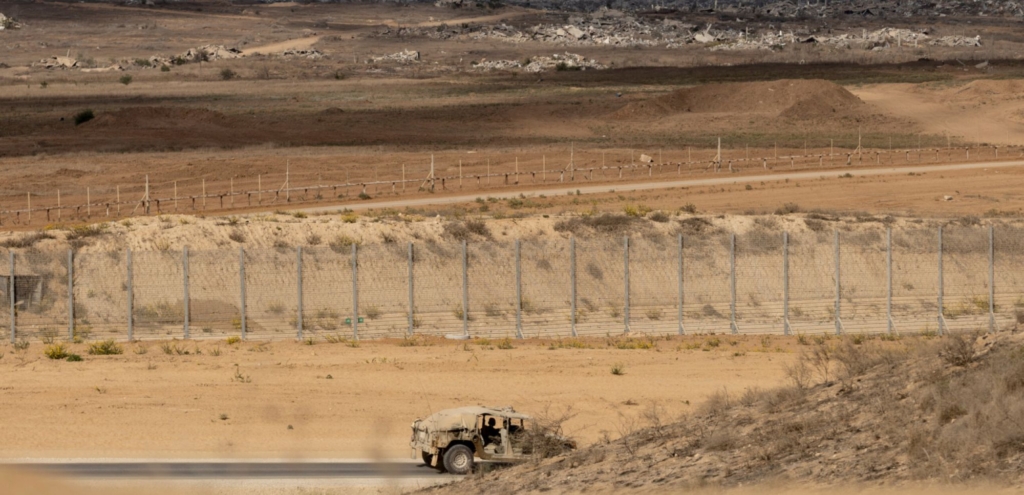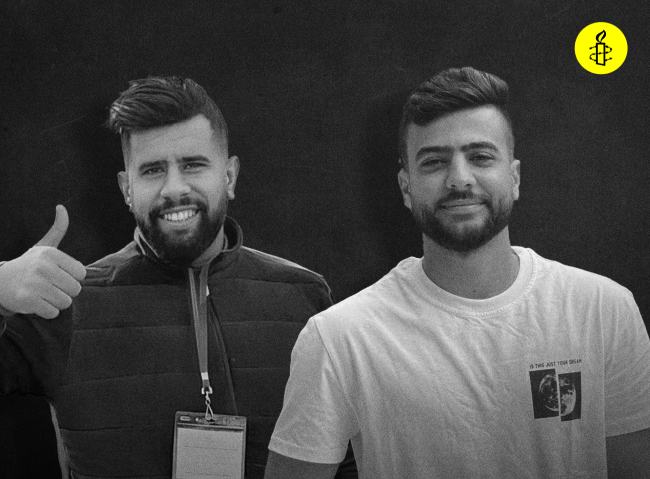By Francesca Pizzutelli, Refugees and Migrants’ Rights Researcher/Advisor at Amnesty International
From the plane, the change of seasons is evident: what three months ago was a large expanse of arid, dusty yellow land, now is dark brown and punctuated by moist green patches. After a first visit in September, my colleague Khairun and I are back in Iraqi Kurdistan (officially known as Kurdistan Region of Iraq, or KRI) to assess the human rights situation of Syrian refugees and displaced Iraqis alike.
| Bersive I camp, near Zakho. The toilets and showers are so far away that they cannot be seen in the distance. © Amnesty International | |
As a result of the advance of the Islamic State armed group (IS) and other violence across the country, more than 2 million Iraqis were displaced during 2014. Nearly half of them, some 950,000, are now in the KRI, a small, semi-autonomous area in northern Iraq with a population of 5.2 million. In other words, the region has seen an influx of people equivalent to almost a fifth of its population – it would be like Scotland suddenly receiving a million people from England and Wales.
Most of them are Yezidis from the Sinjar region, in addition to Turkmen and Arabs from towns and villages around Mosul, Iraq’s second-largest city. Before January 2014, the KRI had already opened its doors to about 230,000 refugees from Syria.
Camps
The Kurdish Regional Government (KRG) has made efforts to build camps for the hundreds of thousands of displaced. Baharka camp, just outside Erbil, hosts around 3,000 displaced Iraqis and Palestinian refugees from Iraq. Being very close to the capital, this is one of the most visible camps. Despite the frequent visits by foreign dignitaries, journalists and charities, however, conditions in the camp are far from ideal, especially when it rains. After dark, solar-powered lamps and mobile torches keep the market going.
The governorate of Dohuk, a town of 280,000 inhabitants west of Erbil, is hosting around 430,000 displaced people, in addition to refugees from Syria. When we first visited the Dohuk area, in September 2014, those who were not hosted by local families sought shelter in any available spaces: the local schools, building sites, unfinished buildings, garages, parks and gardens. Three months later, there are nine official camps for IDPs in the Dohuk governorate, hosting around 125,000 people – catering to only a fraction of the displaced.
Two of the official camps were built by AFAD, the Turkish Disaster and Emergency Management Agency; three were built by the United Nations; and the remaining four were built by the KRG. As a result, their standards of accommodation, facilities and services vary greatly. In Bersive I camp, for example, an AFAD camp hosting around 10,000 people near Zakho, the tents are not fully insulated from the rain, there is no hot water and the number of toilets and showers does not meet minimum standards for humanitarian response.
Unfinished building in Zakho town centre in the Dohuk governorate where around 260 families have been living since August 2014. There are six toilets for men and six for women with no lighting in the main part of the building for the entire group of inhabitants. © Amnesty International
| Unfinished building in Zakho town centre in the Dohuk governorate where around 260 families have been living since August 2014. There are six toilets for men and six for women with no lighting in the main part of the building for the entire group of inhabitants. © Amnesty International | |
Informal settlements
With all their shortcomings, the official camps built so far can only accommodate a small proportion of those in need. The majority are still scattered in hundreds of informal settlements, including construction sites, community spaces and unofficial camps. Others are in private accommodation or hotel rooms. Many of the displaced in the Dohuk governorate live in precarious and dangerous places where they are exposed to the elements and have limited or no access to water and electricity. We visited large, unfinished buildings with no walls, windows, doors or bathrooms, but where hundreds of families now live in makeshift rooms with plastic partitions.
In winter, this difficult situation is made worse by the cold and rainy weather: at night the temperature can go below freezing. In the places we visited, people do not have enough blankets and warm clothes; lack sufficient fuel for heating and cooking; and have inadequate water and sanitation facilities. In a construction site near Zakho, Dohuk governorate, we saw people lighting paper on fire to try to keep warm; the weather forecast for the night is 3°C. Many of the people we visited would not have survived without the help of generous landowners and neighbours.
Displaced children
There are an estimated 186,000 school-aged children (six to 17 years old) displaced in the Dohuk governorate. The majority of them (around 89,000, or 55%) are not in the IDP camps. Even in the camps, there are significant gaps in the provision of basic education. Outside the camps, parents need their children to work in order to contribute to meeting the family’s basic necessities. As a result, very few of the children we met are going to school.
| Displaced children at the informal settlement of Dairabun, near the border with Turkey. @ Amnesty International |
Sharing their stories
We visited families in their tents, where we were offered countless cups of aromatic Arabic coffee and sweet tea. As we are women, the women of the families immediately felt more relaxed with us. We carefully explained Amnesty International’s role and the purpose of our visit, as it is important for them to understand that we cannot provide them with food or clothes. We find people are happy to talk to us all the same, since in many cases, none of the humanitarian organizations who provide them with food or clothes has stopped to listen to their full story.
Some of the cases we documented will need long-term follow-up.
But more can and must be done now in response to the dire winter conditions. As soon as we returned from Iraqi Kurdistan we published part of our findings, urging the international community to improve coordination and fill the gaps in humanitarian assistance.
For the hundreds of thousands of displaced in Iraqi Kurdistan, the struggle for survival is far from over. The least the world can do is to help to make their situation a little less bleak.
Read more:
- Overview of current human rights crisis in Iraq
- Iraq: Dire winter conditions expose shocking gaps in humanitarian assistance for thousands displaced (News story/briefing, 19 December 2014)
- The plight of Iraq’s civilian population (Blog, 7 July 2014)























